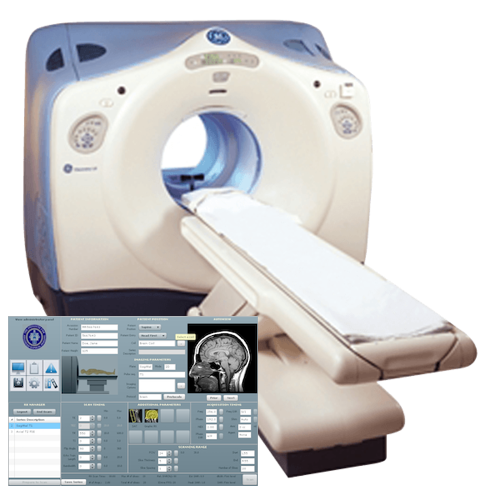|
MSM (MethylSulfonylMethane) is an abbreviation of methylsulfonylmethane, an organic form of sulfur. The chemical formula of MSM is CH3SO2CH3. It is the form in which sulfur is biologically active and appears in nature in all living organisms.
$39.95
|
|
Cancer: >
Cervical Cancer
Cervical Cancer
General Information About Cervical CancerKEY POINTS
Cervical cancer is a disease in which malignant (cancer) cells form in the tissues of the cervix.The cervix is the lower, narrow end of the uterus (the hollow, pear-shaped organ where a fetus grows). The cervix leads from the uterus to the vagina (birth canal).
Anatomy of the female reproductive system. The organs in the female reproductive system include the uterus, ovaries, fallopian tubes, cervix, and vagina. The uterus has a muscular outer layer called the myometrium and an inner lining called the endometrium. Cervical cancer usually develops slowly over time. Before cancer appears in the cervix, the cells of the cervix go through changes known as dysplasia, in which abnormal cells begin to appear in the cervical tissue. Over time, the abnormal cells may become cancer cells and start to grow and spread more deeply into the cervix and to surrounding areas. Cervical cancer in children is rare. See the following PDQ summaries for more information about cervical cancer:
Human papillomavirus (HPV) infection is the major risk factor for cervical cancer.Anything that increases your chance of getting a disease is called a risk factor. Having a risk factor does not mean that you will get cancer; not having risk factors doesn't mean that you will not get cancer. Talk to your doctor if you think you may be at risk for cervical cancer. Risk factors for cervical cancer include the following:
In women who are infected with HPV, the following risk factors add to the increased risk of cervical cancer:
There are also risk factors that increase the risk of HPV infection:
Older age is a main risk factor for most cancers. The chance of getting cancer increases as you get older. There are usually no signs or symptoms of early cervical cancer but it can be detected early with regular check-ups.Early cervical cancer may not cause signs or symptoms. Women should have regular check-ups, including tests to check for human papillomavirus (HPV) or abnormal cells in the cervix. The prognosis (chance of recovery) is better when the cancer is found early. Signs and symptoms of cervical cancer include vaginal bleeding and pelvic pain.These and other signs and symptoms may be caused by cervical cancer or by other conditions. Check with your doctor if you have any of the following:
Tests that examine the cervix are used to detect (find) and diagnose cervical cancer.The following procedures may be used:
Pelvic exam. A doctor or nurse inserts one or two lubricated, gloved fingers of one hand into the vagina and presses on the lower abdomen with the other hand. This is done to feel the size, shape, and position of the uterus and ovaries. The vagina, cervix, fallopian tubes, and rectum are also checked.
Pap test. A speculum is inserted into the vagina to widen it. Then, a brush is inserted into the vagina to collect cells from the cervix. The cells are checked under a microscope for signs of disease.
Certain factors affect prognosis (chance of recovery) and treatment options.The prognosis (chance of recovery) depends on the following:
Treatment options depend on the following:
Treatment of cervical cancer during pregnancy depends on the stage of the cancer and the stage of the pregnancy. For cervical cancer found early or for cancer found during the last trimester of pregnancy, treatment may be delayed until after the baby is born. For more information, see the section on Cervical Cancer During Pregnancy. Stages of Cervical CancerKEY POINTS
After cervical cancer has been diagnosed, tests are done to find out if cancer cells have spread within the cervix or to other parts of the body.The process used to find out if cancer has spread within the cervix or to other parts of the body is called staging. The information gathered from the staging process determines the stage of the disease. It is important to know the stage in order to plan treatment. The following tests and procedures may be used in the staging process:
The results of these tests are viewed together with the results of the original tumor biopsyto determine the cervical cancer stage. There are three ways that cancer spreads in the body.Cancer can spread through tissue, the lymph system, and the blood:
Cancer may spread from where it began to other parts of the body.When cancer spreads to another part of the body, it is called metastasis. Cancer cells break away from where they began (the primary tumor) and travel through the lymph system or blood.
The metastatic tumor is the same type of cancer as the primary tumor. For example, if cervical cancer spreads to the lung, the cancer cells in the lung are actually cervical cancer cells. The disease is metastatic cervical cancer, not lung cancer.
metastasis: how cancer spreads The following stages are used for cervical cancer:Carcinoma in Situ (Stage 0)In carcinoma in situ (stage 0), abnormal cells are found in the innermost lining of the cervix. These abnormal cells may become cancer and spread into nearby normal tissue.
Millimeters (mm). A sharp pencil point is about 1 mm, a new crayon point is about 2 mm, and a new pencil eraser is about 5 mm. Stage IIn stage I, cancer is found in the cervix only. Stage I is divided into stages IA and IB, based on the amount of cancer that is found.
Stage IA1 and IA2 cervical cancer. A very small amount of cancer that can only be seen with a microscope is found in the tissues of the cervix. In stage IA1, the cancer is not more than 3 millimeters deep and not more than 7 millimeters wide. In stage IA2, the cancer is more than 3 but not more than 5 millimeters deep, and not more than 7 millimeters wide.
Stage IB1 and IB2 cervical cancer. In stage IB1, the cancer can only be seen with a microscope and is more than 5 mm deep and more than 7 mm wide OR the cancer can be seen without a microscope and is 4 cm or smaller. In stage IB2, the cancer is larger than 4 cm.
Stage II
Stage II cervical cancer. Cancer has spread beyond the cervix but not to the pelvic wall or to the lower third of the vagina. In stages IIA1 and IIA2, cancer has spread beyond the cervix to the vagina. In stage IIA1, the tumor can be seen without a microscope and is 4 centimeters or smaller. In stage IIA2, the tumor can be seen without a microscope and is larger than 4 centimeters. In stage IIB, cancer has spread beyond the cervix to the tissues around the uterus. In stage II, cancer has spread beyond the uterus but not onto the pelvic wall (the tissuesthat line the part of the body between the hips) or to the lower third of the vagina. Stage II is divided into stages IIA and IIB, based on how far the cancer has spread.
Stage IIIIn stage III, cancer has spread to the lower third of the vagina, and/or onto the pelvic wall, and/or has caused kidney problems. Stage III is divided into stages IIIA and IIIB, based on how far the cancer has spread.
Stage IIIA cervical cancer. Cancer has spread to the lower third of the vagina but not to the pelvic wall.
Stage IVIn stage IV, cancer has spread beyond the pelvis, or can be seen in the lining of the bladderand/or rectum, or has spread to other parts of the body. Stage IV is divided into stages IVA and IVB, based on where the cancer has spread.
Stage IVB cervical cancer. The cancer has spread to other parts of the body, such as the lymph nodes, lung, liver, intestine, or bone.
Recurrent Cervical CancerRecurrent cervical cancer is cancer that has recurred (come back) after it has been treated. The cancer may come back in the cervix or in other parts of the body. Treatment Option OverviewKEY POINTS
There are different types of treatment for patients with cervical cancer.Different types of treatment are available for patients with cervical cancer. Some treatments are standard (the currently used treatment), and some are being tested in clinical trials. A treatment clinical trial is a research study meant to help improve current treatments or obtain information on new treatments for patients with cancer. When clinical trials show that a new treatment is better than the standard treatment, the new treatment may become the standard treatment. Patients may want to think about taking part in a clinical trial. Some clinical trials are open only to patients who have not started treatment. Five types of standard treatment are used:SurgerySurgery (removing the cancer in an operation) is sometimes used to treat cervical cancer. The following surgical procedures may be used:
Hysterectomy. The uterus is surgically removed with or without other organs or tissues. In a total hysterectomy, the uterus and cervix are removed. In a total hysterectomy with salpingo-oophorectomy, (a) the uterus plus one (unilateral) ovary and fallopian tube are removed; or (b) the uterus plus both (bilateral) ovaries and fallopian tubes are removed. In a radical hysterectomy, the uterus, cervix, both ovaries, both fallopian tubes, and nearby tissue are removed. These procedures are done using a low transverse incision or a vertical incision.
Radiation therapyRadiation therapy is a cancer treatment that uses high-energy x-rays or other types of radiation to kill cancer cells or keep them from growing. There are two types of radiation therapy:
The way the radiation therapy is given depends on the type and stage of the cancer being treated. External and internal radiation therapy are used to treat cervical cancer, and may also be used as palliative therapy to relieve symptoms and improve quality of life. ChemotherapyChemotherapy is a cancer treatment that uses drugs to stop the growth of cancer cells, either by killing the cells or by stopping them from dividing. When chemotherapy is taken by mouth or injected into a vein or muscle, the drugs enter the bloodstream and can reach cancer cells throughout the body (systemic chemotherapy). When chemotherapy is placed directly into the cerebrospinal fluid, an organ, or a body cavity such as the abdomen, the drugs mainly affect cancer cells in those areas (regional chemotherapy). The way the chemotherapy is given depends on the type and stage of the cancer being treated. Targeted therapyTargeted therapy is a type of treatment that uses drugs or other substances to identify and attack specific cancer cells without harming normal cells. Monoclonal antibody therapy is a type of targeted therapy that uses antibodies made in the laboratory from a single type of immune system cell. These antibodies can identify substances on cancer cells or normal substances that may help cancer cells grow. The antibodies attach to the substances and kill the cancer cells, block their growth, or keep them from spreading. Monoclonal antibodies are given by infusion. They may be used alone or to carry drugs, toxins, or radioactive material directly to cancer cells. Bevacizumab is a monoclonal antibody that binds to a protein called vascular endothelial growth factor (VEGF) and may prevent the growth of new blood vessels that tumors need to grow. Bevacizumab is used to treat cervical cancer that has metastasized (spread to other parts of the body) and recurrent cervical cancer. See Drugs Approved for Cervical Cancer for more information. ImmunotherapyImmunotherapy is a treatment that uses the patient's immune system to fight cancer. Substances made by the body or made in a laboratory are used to boost, direct, or restore the body's natural defenses against cancer. This type of cancer treatment is also called biotherapy or biologic therapy. Immune checkpoint inhibitor therapy is a type of immunotherapy.
Immune checkpoint inhibitor. Checkpoint proteins, such as PD-L1 on tumor cells and PD-1 on T cells, help keep immune responses in check. The binding of PD-L1 to PD-1 keeps T cells from killing tumor cells in the body (left panel). Blocking the binding of PD-L1 to PD-1 with an immune checkpoint inhibitor (anti-PD-L1 or anti-PD-1) allows the T cells to kill tumor cells (right panel). Patients may want to think about taking part in a clinical trial.For some patients, taking part in a clinical trial may be the best treatment choice. Clinical trials are part of the cancer research process. Clinical trials are done to find out if new cancer treatments are safe and effective or better than the standard treatment. Many of today's standard treatments for cancer are based on earlier clinical trials. Patients who take part in a clinical trial may receive the standard treatment or be among the first to receive a new treatment. Patients who take part in clinical trials also help improve the way cancer will be treated in the future. Even when clinical trials do not lead to effective new treatments, they often answer important questions and help move research forward. Patients can enter clinical trials before, during, or after starting their cancer treatment.Some clinical trials only include patients who have not yet received treatment. Other trials test treatments for patients whose cancer has not gotten better. There are also clinical trials that test new ways to stop cancer from recurring (coming back) or reduce the side effects of cancer treatment. Clinical trials are taking place in many parts of the country. Information about clinical trials supported by NCI can be found on NCI’s clinical trials search webpage. Clinical trials supported by other organizations can be found on the ClinicalTrials.gov website. Follow-up tests may be needed.Some of the tests that were done to diagnose the cancer or to find out the stage of the cancer may be repeated. Some tests will be repeated in order to see how well the treatment is working. Decisions about whether to continue, change, or stop treatment may be based on the results of these tests. Some of the tests will continue to be done from time to time after treatment has ended. The results of these tests can show if your condition has changed or if the cancer has recurred (come back). These tests are sometimes called follow-up tests or check-ups. Your doctor will ask if you have any of the following signs or symptoms, which may mean the cancer has come back:
For cervical cancer, follow-up tests are usually done every 3 to 4 months for the first 2 years, followed by check-ups every 6 months. The check-up includes a current health history and exam of the body to check for signs and symptoms of recurrent cervical cancer and for late effects of treatment. Treatment Options by StageCarcinoma in Situ (Stage 0)Treatment of carcinoma in situ (stage 0) may include the following:
Use our clinical trial search to find NCI-supported cancer clinical trials that are accepting patients. You can search for trials based on the type of cancer, the age of the patient, and where the trials are being done. General information about clinical trials is also available. Stage IA Cervical CancerStage IA cervical cancer is separated into stage IA1 and IA2. Treatment for stage IA1 may include the following:
Treatment for stage IA2 may include the following:
Stages IB and IIA Cervical CancerTreatment of stage IB and stage IIA cervical cancer may include the following:
Stages IIB, III, and IVA Cervical CancerTreatment of stage IIB, stage III, and stage IVA cervical cancer may include the following:
Stage IVB Cervical CancerTreatment of stage IVB cervical cancer may include the following:
Treatment Options for Recurrent Cervical CancerFor information about the treatments listed below, see the Treatment Option Overviewsection. Treatment of recurrent cervical cancer may include the following:
Cervical Cancer During PregnancyGeneral Information About Cervical Cancer During PregnancyTreatment of cervical cancer during pregnancy depends on the stage of the cancer and how long the patient has been pregnant. A biopsy and imaging tests may be done to determine the stage of the disease. To avoid exposing the fetus to radiation, MRI(magnetic resonance imaging) is used. Carcinoma in Situ (Stage 0) During PregnancyUsually, no treatment is needed for carcinoma in situ (stage 0) during pregnancy. A colposcopy may be done to check for invasive cancer. Stage I Cervical Cancer During PregnancyPregnant women with slow-growing stage I cervical cancer may be able to delay treatment until the second trimester of pregnancy or after delivery. Pregnant women with fast-growing stage I cervical cancer may need immediate treatment. Treatment may include:
Women should be tested to find out if the cancer has spread to the lymph nodes. If cancer has spread to the lymph nodes, immediate treatment may be needed. Stage II, III, and IV Cervical Cancer During PregnancyTreatment for stage II, stage III, and stage IV cervical cancer during pregnancy may include the following:
Chemotherapy uses anti-cancer drugs that are injected into a vein or given by mouth.These drugs enter the bloodstream and can reach all areas of the body, making this treatment useful for killing cancer cells.
Stages of a cervical cancer is the important factor in choosing treatment.Other factors affect your treatment options, exact location of the cancer within the cervix, the type of cancer,age & overall health,children.
Drugs Approved to Prevent Cervical Cancer,Drugs Approved to Treat Cervical Cancer,Drug Combinations Used in Cervical Cancer
Surgery can be used to:Help diagnose cervical cancer
Help determine how far the cancer has spread
Help treat the cancer (especially for earlier-stage cancers)
For tumors to grow, they must form new blood vessels to keep them nourished. This process is called angiogenesis. Some targeted drugs block this new blood vessel growth and are called angiogenesis inhibitors.
Radiation therapy uses high energy x-rays or radioactive particles to kill cancer cells. Radiation therapy may be used for cervical cancer:
|
|
|

OPEN 24 HOURS: ACCIDENT EMERGENCY, LAB SERVICES, IMAGING SERVICES & PHARMACY
























